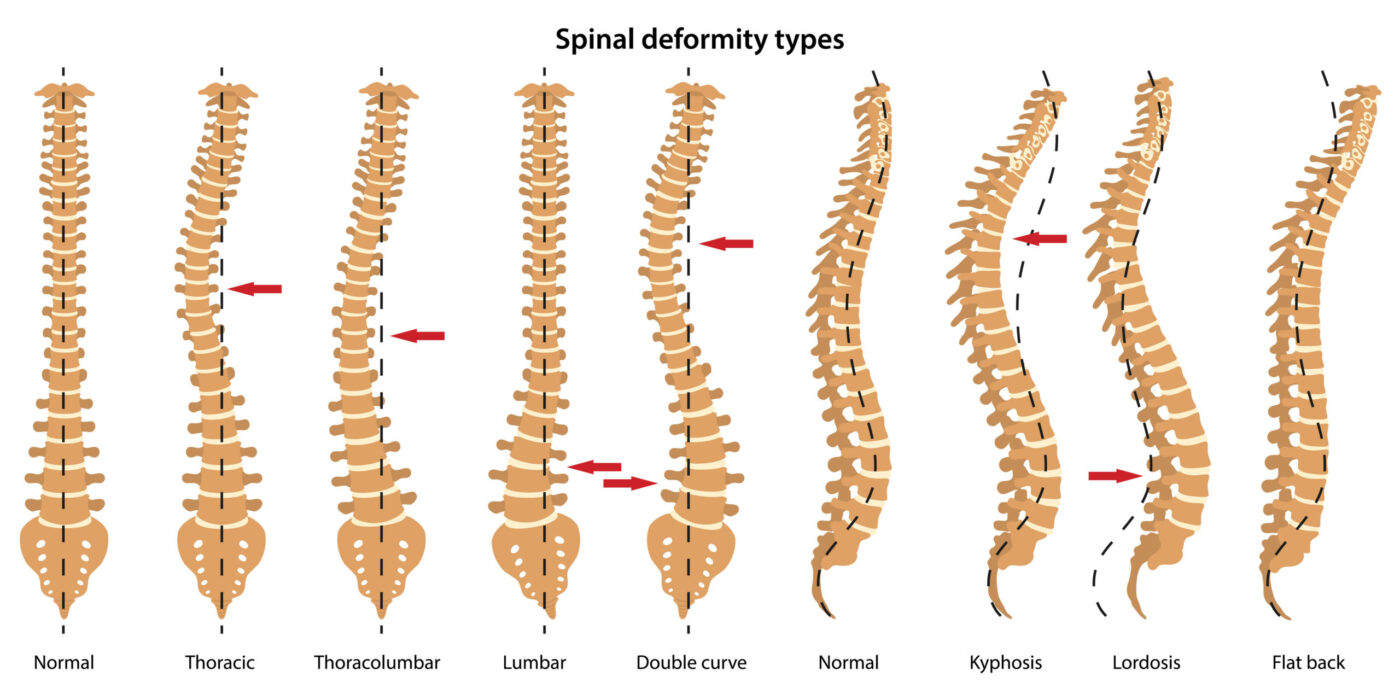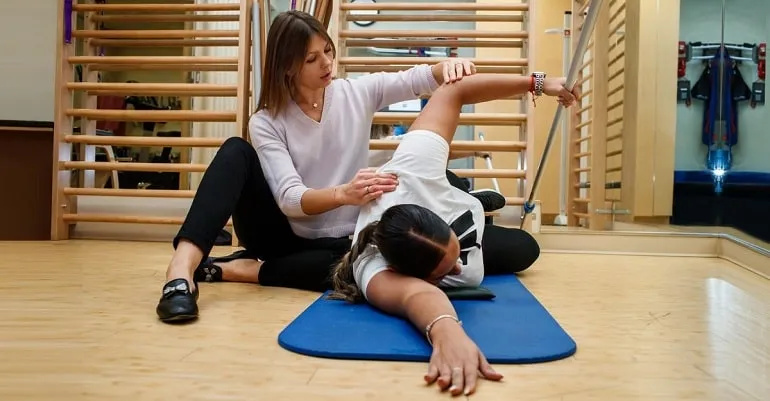Récupération après une chirurgie de la scoliose: La chirurgie de la scoliose est une intervention majeure qui vise à corriger la courbure de la colonne vertébrale. Si l'opération elle-même est cruciale dans le traitement de la scoliose, la période de convalescence est tout aussi importante pour obtenir des résultats optimaux. Comprendre ce à quoi il faut s'attendre pendant le processus de guérison et comment améliorer le rétablissement peut grandement contribuer à un résultat positif.

Préparation à l'opération : à quoi s'attendre
Avant de subir une chirurgie de la scoliose, il est essentiel d'être bien préparé physiquement et mentalement. Votre chirurgien vous fournira des instructions détaillées sur la manière de vous préparer à l'intervention. Il peut s'agir de jeûner pendant un certain temps avant l'opération, d'arrêter certains médicaments et de passer des tests préopératoires.
Outre la préparation physique, il est important de se préparer mentalement à l'opération. Il est normal de se sentir anxieux ou nerveux, mais un état d'esprit positif et la confiance en votre équipe médicale peuvent aider à atténuer ces sentiments. Parler à votre chirurgien ou à un professionnel de la santé mentale peut également vous apporter un soutien précieux pendant cette période.

Soins et surveillance postopératoires immédiats
Après l'opération de la scoliose, vous serez étroitement surveillé dans la salle de réveil avant d'être transféré dans une chambre d'hôpital. Pendant cette période, vous pourrez ressentir de la douleur, de l'inconfort et de la fatigue. L'équipe médicale vous administrera des médicaments contre la douleur et surveillera régulièrement vos signes vitaux.
Il se peut également que des drains soient mis en place pour éliminer l'excès de liquide du site chirurgical. Ces drains seront retirés une fois que l'écoulement sera revenu à un niveau acceptable. Il est important de suivre les instructions de votre chirurgien concernant les soins de la plaie et du site d'incision afin de prévenir l'infection et de favoriser la cicatrisation.
Gérer la douleur et l'inconfort après une chirurgie de la scoliose
La gestion de la douleur est un aspect crucial du rétablissement après une chirurgie de la scoliose. Votre chirurgien vous prescrira des médicaments contre la douleur pour vous aider à soulager l'inconfort pendant les premiers stades de la convalescence. Il est important de prendre les médicaments comme indiqué et de faire part à votre équipe médicale de toute inquiétude ou de tout changement dans les niveaux de douleur.
Outre les médicaments, d'autres stratégies peuvent aider à gérer la douleur et l'inconfort. Il s'agit notamment de l'utilisation de poches de glace ou de la thérapie par la chaleur, de la pratique de techniques de relaxation telles que la respiration profonde ou la méditation, et du maintien d'une posture et d'une mécanique corporelle correctes.
Exercices de kinésithérapie et de rééducation
La kinésithérapie joue un rôle essentiel dans le processus de rétablissement après une chirurgie de la scoliose. Votre chirurgien vous recommandera un programme de kinésithérapie adapté à vos besoins spécifiques. L'objectif de la kinésithérapie est d'améliorer la force, la souplesse et le fonctionnement général de la colonne vertébrale.
Au début, la thérapie physique peut se concentrer sur des exercices doux d'amplitude des mouvements et des techniques de respiration. Au fur et à mesure de votre progression, les exercices deviendront plus difficiles et pourront inclure des exercices de renforcement du tronc, des étirements et des exercices d'équilibre. Il est important de suivre les instructions de votre kinésithérapeute et d'assister à toutes les séances prévues afin d'optimiser votre rétablissement.

Considérations diététiques pour une guérison optimale
Une bonne alimentation est essentielle pour une guérison optimale après une chirurgie de la scoliose. Un régime alimentaire équilibré, riche en protéines, en vitamines et en minéraux peut favoriser la réparation des tissus et réduire le risque de complications. Il est important de consommer une variété de fruits, de légumes, de protéines maigres, de céréales complètes et de graisses saines.
Dans certains cas, votre chirurgien peut vous recommander des compléments alimentaires afin de répondre aux besoins de votre corps pendant la période de convalescence. Il est important de discuter de toute préoccupation ou restriction alimentaire avec votre équipe médicale afin de vous assurer que vous recevez une alimentation adéquate.
Soins des plaies et gestion du site d'incision
Un soin approprié de la plaie est essentiel pour prévenir l'infection et favoriser la cicatrisation après une chirurgie de la scoliose. Votre chirurgien vous donnera des instructions spécifiques sur les soins à apporter à votre incision. Il peut s'agir de garder la zone propre et sèche, de changer les pansements régulièrement et d'éviter les activités qui pourraient exercer une pression sur l'incision.
Il est important de surveiller le site d'incision pour déceler tout signe d'infection, comme une rougeur, un gonflement ou un écoulement. Si vous remarquez des symptômes inquiétants, il est important de contacter votre chirurgien immédiatement. Le respect des consignes de soins des plaies peut contribuer à minimiser le risque de complications et à favoriser un rétablissement en douceur.
Complications potentielles et comment y remédier
Bien que la chirurgie de la scoliose soit généralement sans danger, des complications potentielles peuvent survenir pendant la période de convalescence. Il peut s'agir d'une infection, de caillots sanguins, de lésions nerveuses ou d'une défaillance du matériel. Il est important de connaître les signes et les symptômes de ces complications et de consulter un médecin si nécessaire.
Votre chirurgien vous fournira des informations sur les complications potentielles et sur la manière d'y remédier. Il est important de suivre régulièrement votre chirurgien et de lui signaler tout symptôme inquiétant. Une détection et une intervention précoces peuvent grandement améliorer les résultats et prévenir d'autres complications.
Retour aux activités quotidiennes et reprise d'une vie normale
Le retour aux activités quotidiennes et la reprise d'une vie normale après une chirurgie de la scoliose est un processus graduel. Votre chirurgien et votre kinésithérapeute vous guideront tout au long de cette transition, en augmentant progressivement votre niveau d'activité et en vous recommandant les activités à éviter.
Il est important d'être à l'écoute de son corps et de ne pas se surmener trop vite. Augmenter progressivement votre niveau d'activité et suivre les conseils de votre équipe médicale peut vous aider à éviter les revers et à favoriser un rétablissement en douceur. Il est également important de disposer d'un système de soutien pour vous aider dans vos tâches quotidiennes au cours des premières étapes de votre rétablissement.
Soutien émotionnel et psychologique pendant le rétablissement
Se remettre d'une chirurgie de la scoliose peut être difficile sur le plan émotionnel. Il est normal de ressentir toute une gamme d'émotions, notamment de la frustration, de la tristesse ou de l'anxiété. La mise en place d'un système de soutien solide peut grandement contribuer à votre bien-être émotionnel pendant cette période.
Parler à des amis, à la famille ou à un professionnel de la santé mentale peut vous apporter un soutien précieux et vous aider à gérer les aspects émotionnels du rétablissement. Rejoindre des groupes de soutien ou entrer en contact avec d'autres personnes ayant subi une chirurgie de la scoliose peut également apporter un sentiment de communauté et de compréhension.
Suivi et contrôle à long terme après chirurgie de la scoliose
Le suivi et la surveillance à long terme sont essentiels après une chirurgie de la scoliose. Votre chirurgien fixera des rendez-vous réguliers pour évaluer vos progrès, surveiller le processus de cicatrisation et répondre à toute préoccupation ou complication éventuelle.
Au cours de ces visites de suivi, votre chirurgien peut demander des radiographies ou d'autres examens d'imagerie pour évaluer l'alignement de votre colonne vertébrale et l'intégrité du matériel utilisé pendant l'opération. Il est important d'assister à tous les rendez-vous prévus et de communiquer tout changement ou toute préoccupation à votre équipe médicale.
Conseils pour améliorer le rétablissement et promouvoir le bien-être général
Plusieurs conseils peuvent améliorer la récupération et favoriser le bien-être général après une chirurgie de la scoliose. En voici quelques-uns :
- Suivez les instructions de votre chirurgien : Il est important de suivre toutes les instructions post-opératoires fournies par votre chirurgien, y compris le calendrier des médicaments, les directives concernant le soin des plaies et les restrictions d'activité.
- Restez actif : Pratiquer une activité physique régulière, selon les recommandations de votre équipe médicale, peut contribuer à améliorer la force, la souplesse et le bien-être général.
- Adoptez une bonne posture : Le maintien d'une bonne posture peut contribuer à soulager la colonne vertébrale et à favoriser la guérison. Évitez de vous avachir ou de rester assis pendant de longues périodes.
- Reposez-vous suffisamment : Un repos suffisant est essentiel au processus de guérison. Veillez à donner la priorité au sommeil et à écouter les besoins de votre corps.
- Restez hydraté : Boire suffisamment d'eau peut favoriser la guérison et prévenir les complications telles que la constipation.
- Recherchez un soutien émotionnel : Faites appel à des amis, à la famille ou à des groupes de soutien pour vous aider à gérer les aspects émotionnels du rétablissement.
- Restez positif : Le maintien d'un état d'esprit positif peut grandement contribuer à votre bien-être général et à votre rétablissement.
En conclusion, le rétablissement après une chirurgie de la scoliose est un processus complexe qui nécessite un soutien physique, émotionnel et psychologique. En sachant à quoi s'attendre pendant le processus de guérison et en mettant en œuvre des stratégies pour améliorer le rétablissement, vous pouvez obtenir des résultats optimaux et reprendre une vie normale. Il est important de suivre les conseils de votre équipe médicale, d'assister à tous les rendez-vous prévus et de faire part de vos inquiétudes ou de tout changement dans vos symptômes. Avec des soins et un soutien appropriés, vous pourrez traverser avec succès la période de guérison et obtenir un résultat positif.
Références
- Weinstein SL, Dolan LA, Cheng JC, et al. "Adolescent idiopathic scoliosis". Lancet. 2008;371(9623):1527-1537. doi : 10.1016/S0140-6736(08)60658-3.
- Negrini S, Donzelli S, Aulisa AG, et al. "2016 SOSORT guidelines : Orthopédie et réadaptation traitement de la scoliose idiopathique pendant la croissance". Scoliose et troubles de la colonne vertébrale. 2018;13:3. doi : 10.1186/s13013-018-0175-8.
- Trobisch P, Suess O, Schwab F. "Scoliose idiopathique". Dtsch Arztebl Int. 2010;107(49):875-883. doi : 10.3238/arztebl.2010.0875.
- Hresko MT. "Pratique clinique. Scoliose idiopathique chez les adolescents". N Engl J Med. 2013;368(9):834-841. doi : 10.1056/NEJMcp1209063.
- Bettany-Saltikov J, Weiss HR, Chockalingam N, et al. "Surgical versus non-surgical interventions in people with adolescent idiopathic scoliosis". Cochrane Database Syst Rev. 2015;2015(4). doi : 10.1002/14651858.CD010663.pub2.
- Lonstein JE, Carlson JM. "The prediction of curve progression in untreated idiopathic scoliosis during growth" (La prédiction de la progression de la courbe dans la scoliose idiopathique non traitée pendant la croissance). J Bone Joint Surg Am. 1984;66(7):1061-1071. doi : 10.2106/00004623-198466070-00008.
- Haher TR, Lerman JD, LaSalle D, et al. "Postoperative care of the patient with scoliosis". Cliniques orthopédiques d'Amérique du Nord. 1999;30(3):419-431. doi : 10.1016/S0030-5898(05)70114-2.
- Labelle H, Reddy AS, Skalli W, et al. "Long-term outcomes of surgical treatment for idiopathic scoliosis : Results of a multicenter study". Colonne vertébrale. 2009;34(14):1505-1513. doi : 10.1097/BRS.0b013e3181a559a0.
- Société de recherche sur la scoliose. "Lignes directrices pour le traitement de la scoliose. Société de recherche sur la scoliose. Disponible à l'adresse suivante : https://www.srs.org/professionals/professional-research/scoliosis-guidelines. Consulté en août 2024.
- Bess S, Asher M, Ghiselli G, et al. "Current concepts in the surgical management of scoliosis". Journal de l'Académie américaine des chirurgiens orthopédiques. 2009;17(7):418-429. doi : 10.5435/00124635-200907000-00002.

